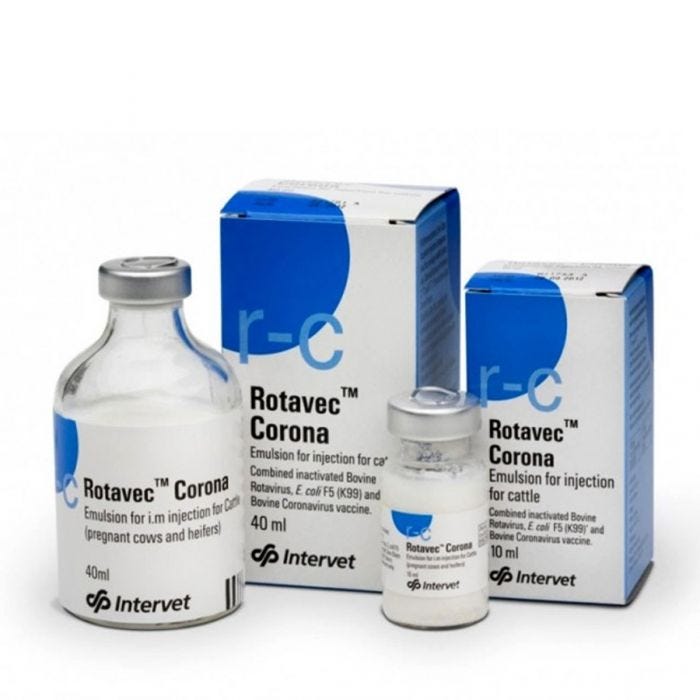Unfortunately, far too many farms are still losing too many calves to scours. Indeed, a 2017 study highlighted that in calves under two months of age, scour is the main cause of death (1).
What’s more, according to MSD Animal Health’s latest national youngstock survey (spring 2020), 81% of more than 300 farmers surveyed said they had experienced scour in their calves during the last 12 months and 50% of farms had suffered mortalities. On dairy farms, calf deaths due to scour had been seen by more than 65% of units.
The cost of treating scour is estimated to be £57.94 per calf affected (2), but this figure doesn’t include the longer-term financial impact associated with depression in growth rates and lifetime productivity. It’s important to appreciate too that treatment with antibiotics is rarely effective against most causes of infectious scour.
Focusing on immunity-led disease prevention
The key to better control of infectious calf scour lies in immunity-led disease prevention supported by good management and hygiene.
Practically, this means giving dry cows a vaccine to boost dam colostrum quality pre-calving – and then feeding enough of this fortified feed to newborn calves. Calves are most at risk from infectious scours during the first 1-4 weeks of life and need a source of protection – through passive transfer of antibodies in the colostrum – to help keep them healthy. On many units, normal colostrum may not provide enough antibodies.
However, vaccination of the calf’s mother with Bovilis® Rotavec® Corona between 12 and 3 weeks before calving boosts colostrum quality, allowing you to feed high levels of antibodies against rotavirus, coronavirus and E.coli F5 (K99) in early life. Calves gain protection by drinking this fortified colostrum from their vaccinated mothers.
To ensure this passive transfer of antibodies from the dam to calves, four litres of colostrum (or at least 10% of calf body weight) containing 50g/litre of IgG antibodies should be fed within the first four hours of birth. This should be followed by two additional litres within 12 hours of birth. For calves left on the cow, getting four litres of colostrum requires approximately 20 minutes of continuous suckling.
Increased usage flexibility with antibiotics
The Bovilis® Rotavec® Corona vaccine from MSD Animal Health was licensed in November 2020 for use up to 28 days after first opening the immediate packaging*. The previous license meant the product needed to be used within 8 hours of opening.
This extended shelf life means greater flexibility in preventing infectious scours on many calf units and will help reduce any unnecessary wastage of vaccines on farm.
The100ml 50-dose pack of Bovilis® Rotavec® Corona is available in more durable product packaging to further improve the vaccine’s usage convenience, economics and environmental credentials.
The vaccine’s product packaging for all packs will also be transitioned from glass vials to polyethylene terephthalate (PET), a lightweight commercial plastic widely used for durably packaging pharmaceuticals.
PET has a significantly smaller production, transportation and disposal carbon footprint compared to glass, requiring less energy to produce. From a safety point of view, PET does not break or fracture – and requires nearly seven times less material (by volume/weight) compared with glass – which means lower carbon dioxide emissions and reduced transportation costs.
Vaccine storage and administration
To maintain the efficacy of the Bovilis® Rotavec® Corona vaccine, it must be stored properly – upright and refrigerated (at between 2 to 8°C) before and after broaching, and after first use. A broached vial will be able to be used once more during the next 28 days after the first vaccination event and then discarded.
Vaccine vials should still be shaken well before use. The injection should be made through an area of clean, dry skin with precautions taken against contamination. Vaccination equipment such as needles and syringes should be sterilised. Use of a multi-dose syringe to minimise vaccine contamination and excessive broaching is recommended.
Taking steps to prevent youngstock illness is critical to the long-term productivity of that animal and your business.
For more information on how vaccination can be used to prevent scour and other youngstock diseases – and the detail on the correct fridge storage protocols for animal medicines – please contact us.
Read more: Pneumonia and Scours - A Vet's Perspective
Read more: Stress over Scour
References: 1. Johnson et al. (2017) Prospective cohort study to assess rates of contagious disease in pre-weaned UK dairy heifers: management practices, passive transfer of immunity & associated calf health. Veterinary Record Open 2017;4:e000226. doi:10.1136/vetreco-2017-000226 2. Economic impact of health and welfare issues in beef cattle and sheep in England. ADAS report, April 2013. *Please refer to the product label or SPC for further information. BOVILIS® ROTAVEC® CORONA contains inactivated rotavirus and coronavirus and E. coli F5 (K99) antigens. POM-VPS. Further information is available from the SPC, datasheet or package leaflet. MSD Animal Health UK Limited. Registered office Walton Manor, Walton, Milton Keynes MK7 7AJ, UK. Registered in England & Wales no. 946942. Advice should be sought from the medicine prescriber. Use Medicines Responsibly. © 2021 MSD Animal Health UK Limited. All Rights Reserved.












